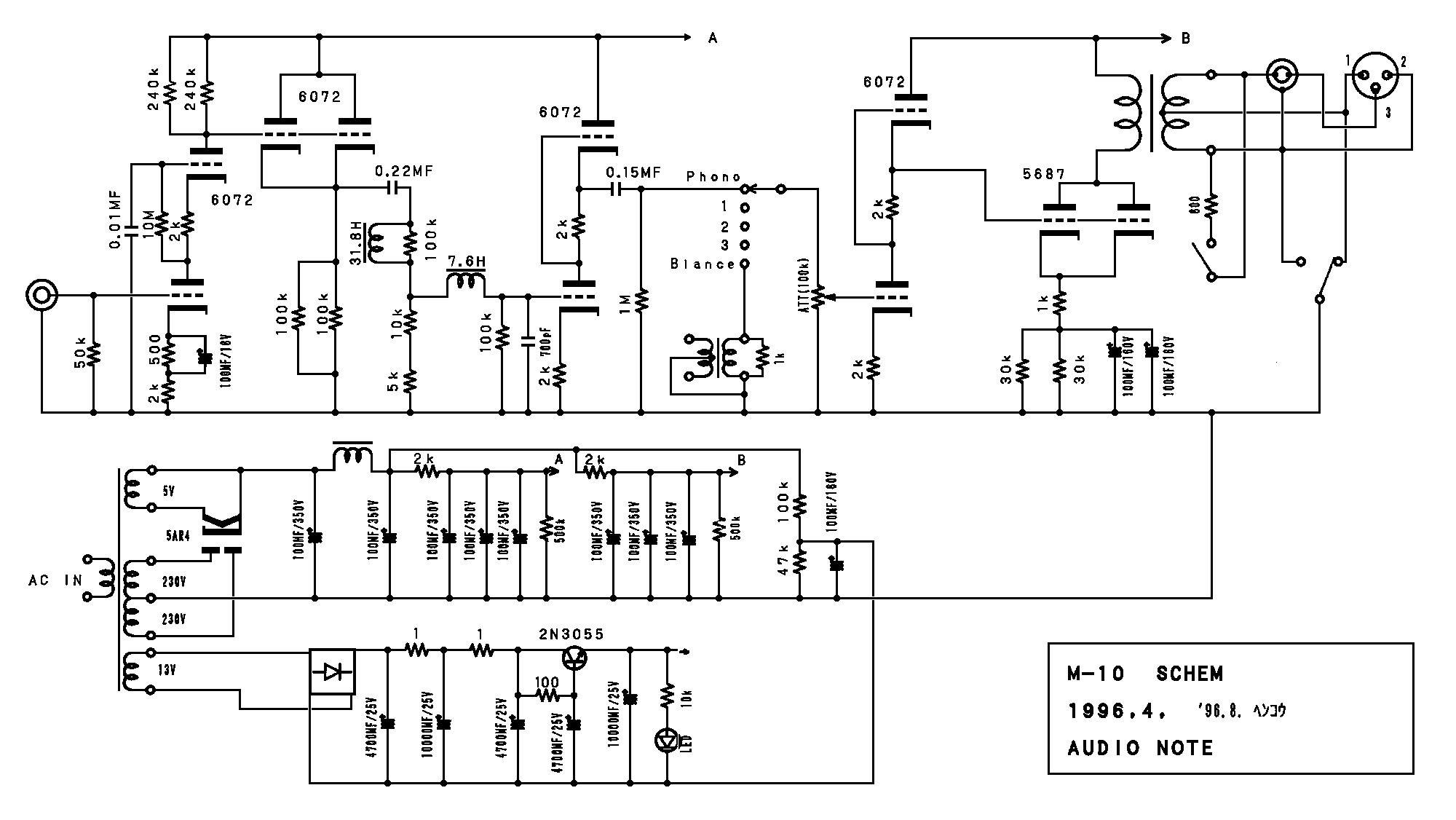I am looking at some linestage with output transformer coupling. it seems that some designs incorporate a resistive load at the secondary of the linestage output transformers. eg. 600ohms , 1k etc. one example would be the AudioNote M10.

there are also plenty of designs without the resistive load at the secondary.
can anyone advise the purpose of this resistor?

there are also plenty of designs without the resistive load at the secondary.
can anyone advise the purpose of this resistor?
Last edited:
In the schematic you have provided, and most others like it, it is to maintain the correct load impedance reflected back to the primary and plate of the output tube. This is done in case the external load is insufficient to perform the task. If you should connect an external load of the correct matching value, then a resistor is unnecessary. The resistor shown in the circuit is called a terminating resistor that can be switched in or out as needed. In the case of a tape recorder playback amplifier that has a VU meter connected across the secondary, proper termination is necessary for correct meter calibration.
Last edited:
In the schematic you have provided, and most others like it, it is to maintain the correct load impedance reflected back to the primary and plate of the output tube. This is done in case the external load is insufficient to perform the task. If you should connect an external load of the correct matching value, then a resistor is unnecessary. The resistor shown in the circuit is called a terminating resistor that can be switched in or out as needed. In the case of a tape recorder playback amplifier that has a VU meter connected across the secondary, proper termination is necessary for correct meter calibration.
any method to determine if the external load is sufficient or of correct matching value & anyway to know what this value must be?
any method to determine if the external load is sufficient or of correct matching value & anyway to know what this value must be?
Consulting the manufacture's specifications is the best way. In the case of a transformer coupled output like the M-10, the secondary impedance is the value to use. And the terminating resistor will (or should) match it. In this case it is 600 ohms which is standard for most professional audio line amps.
The resistor is there to provide a termination should it be required, note as well that it will reduce the gain significantly (depending on primary impedance relative to the driver tube rp) which may be its real purpose. I serviced a lot of AN stuff and indeed most of my system is transformer coupled. In just about all cases with UTC, AN and Magnequest transformers I have found it generally sounds slightly better when the transformer is driving a relatively high load impedance. (10X -100X the impedance the transformer is designed to drive) Remember we are mainly interested in voltage gain here and significant power transfer is not involved. (I have never seen an M10 where the switch was closed and the resistor was in circuit.)
Poorer quality transformers may behave and sound better with load impedances relatively close to their designed load impedance.
There should generally be no problem with running these into loads that are close to open circuit relative to the impedance the transformer is designed to drive. Note that this is not true in the case where the driver can develop appreciable power (plate voltages and current capability) sufficient to damage the transformer. I have yet to see this in my somewhat limited experience. (I run with a crowd of people who use transformer coupling extensively, although at this point I am certainly the most extreme.. )
)
Poorer quality transformers may behave and sound better with load impedances relatively close to their designed load impedance.
There should generally be no problem with running these into loads that are close to open circuit relative to the impedance the transformer is designed to drive. Note that this is not true in the case where the driver can develop appreciable power (plate voltages and current capability) sufficient to damage the transformer. I have yet to see this in my somewhat limited experience. (I run with a crowd of people who use transformer coupling extensively, although at this point I am certainly the most extreme..
Last edited:
- Status
- This old topic is closed. If you want to reopen this topic, contact a moderator using the "Report Post" button.